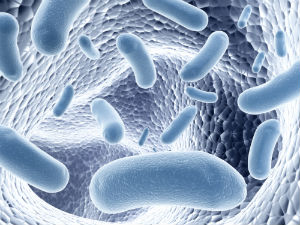
Two thousand years ago, the Greeks and Romans used silver containers to hold and protect perishable liquids against harmful organisms. Silver containers were used until the invention of refrigeration to protect food liquids, such as milk, from spoiling. Using silver in the medical setting came into practice about one hundred and fifty years ago as a means to protect against infection. It remained popular against harmful organisms until the advent of antibiotics.
What is Colloidal Silver?
Colloidal silver is a preparation of silver particles in a pure solution. When properly produced, these microscopic silver particles carry a positive ionic charge that makes them effective against harmful organisms. Colloidal silver produced with high voltage technology is the most bioavailable and safest form of silver. Silver products made with low voltage methods are lower quality and can be ineffective and even contribute to argyria if consumed in excess. This is why it is so crucial to seek out a high-quality colloidal silver supplement produced with high voltage technology from the purest silver and distilled water available.
How is Silver Harmful to Harmful Organisms?
When positive silver ions encounter harmful anaerobic organisms like single-celled bacteria and fungus, it binds to the cell wall. The silver ions adsorb into the organism and, once inside, disrupt cellular function and neutralize the organism.[1]
The complete mechanism of this action remains to be determined. Silver appears to disrupt energy production within the cell of the bacteria. Additionally, silver may oxidize organisms, disrupt cellular respiration, and affect the enzymes in their environment in a way that makes it impossible for harmful organisms to thrive.
How it affects viruses is somewhat different, possibly oxidizing the virus and reducing its function. Some believe silver directly affects the DNA of the organism. This may deactivate the virus, making it inert and no longer harmful.
How Effective is Colloidal Silver?
A 1978 article published in Science Digest reported on clinical studies supporting silver as a potent killer of 650 live tested organisms. The research showed that silver was even successful against resistant strains. Research performed at UCLA Medical Labs verified these findings, documenting how colloidal silver was effective against a variety of live viruses.[2]
Polish researchers conducted a recent study that tested colloidal silver against several common harmful organisms.[3] The success of these tests relied on a colloidal silver product containing the smallest possible silver particles.
Although many organisms have adapted to resist antibiotics, silver’s cellular disruption continues to remain effective against common damaging compounds. Fortunately, silver is nontoxic and shows no sign of microorganism resistance.
Not All Silver is Created Equal
According to a 1992 Italian study by the Institute of Microbiology, pure electro-colloidal silver worked up to 100 times better than all other forms of silver. Solutions with smaller particle sizes (.005 microns or smaller) allow for a wider distribution of silver particles. The silver particles must also carry a positive electrical charge, as is found in quality preparations of colloidal silver. When choosing a silver solution, the highest quality and purity are necessary for maximum effectiveness and safety.
As with any product you ingest, the higher the quality, the better the results and the less likely the chance of side effects. Colloidal silver produced with high voltage technology does not cause the side effects that can occur with the ingestion of large silver salts or silver particles. Argyria, or the bluing of the skin, can result from ingesting large silver particles. To avoid argyria, it is important that you choose a silver supplement with small silver particles.
References (3)
- Lansdown AB. A review of the use of silver in wound care: facts and fallacies. Br J Nurs. 2004 Mar;13(6 Suppl):S6-19.
- Coburn, Dhyana L., Dignan, Patrick D. The Wonders of Colloidal Silver. 1997.
- Pokrowiecki R, Zareba T, Mielczarek A, Opaliska A, Wojnarowicz J, Majkowski M, Lojkowski W, Tyski S. Evaluation of biocidal properties of silver nanoparticles against cariogenic bacteria. Med Dosw Mikrobiol. 2013;65(3):197-206.
†Results may vary. Information and statements made are for education purposes and are not intended to replace the advice of your doctor. If you have a severe medical condition or health concern, see your physician.







